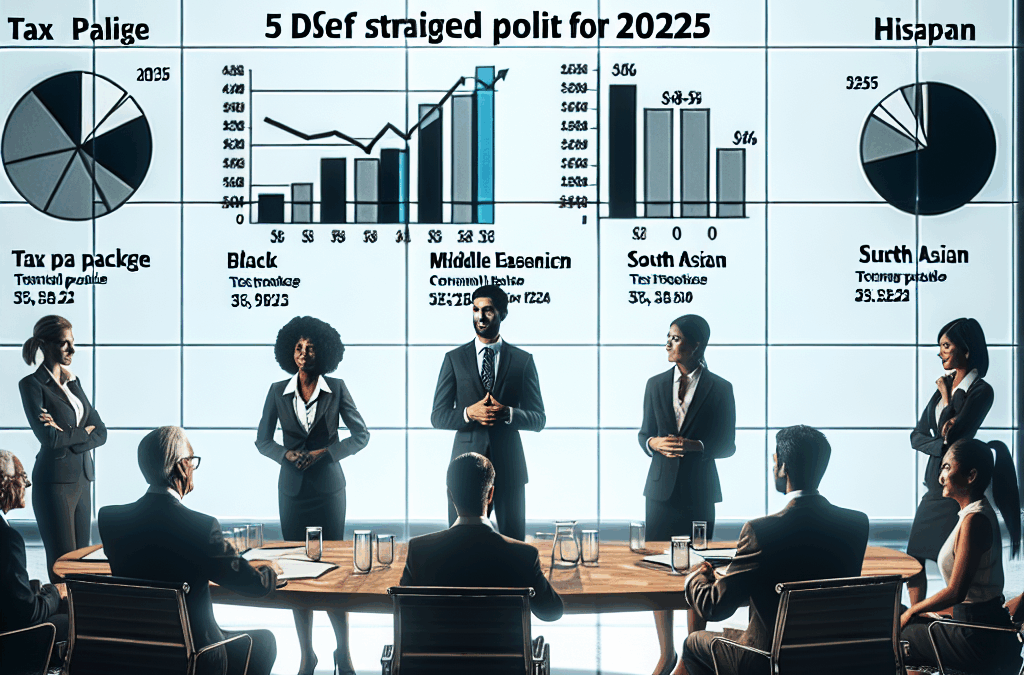- Introduction
- 1. Emphasizing Economic Resilience
- 2. Addressing Tax Incentives
- 3. Fostering Innovation and Technology
- 4. Promoting Workforce Development
- 5. Ensuring Fiscal Responsibility
- Conclusion
- FAQs
Introduction
As the 2025 tax reforms are being debated, Republican economists debate longâterm growth vs. shortâterm relief in new tax package continues to be a pivotal concern. The balance between immediate financial relief for families and businesses versus sustainable economic strategies for future growth sparks passionate discussions.
Understanding this debate is crucial for policymakers, businesses, and citizens alike. With a potential recession looming and inflation concerns, the upcoming tax package aims to provide relief while also ensuring that the economy doesnât just shoot up temporarily, but can thrive in the long term.
In this article, we will explore the five effective strategies that could help shape the debate on this critical issue.
1. Emphasizing Economic Resilience
The Need for LongâTerm Planning
One focal point in the debate is the significance of creating policies that ensure the economy is resilient in the face of unexpected downturns. Republican economists argue that plans should incorporate a stable tax structure that promotes growth rather than temporary fixes.
For example, during the COVID-19 pandemic, many areas implemented short-term tax relief measures. While these helped many families, such measures didn’t create a foundation for future improvement. In 2025, the focus on resilience must ensure that long-term strategies are also feasible and beneficial.
The lesson here is clear: for lasting benefits, resilience must be interwoven into the fabric of economic policies. This means considering how proposed tax changes can impact economic stability over a decade rather than a single year.
Real-World Applications
Countries that have prioritized economic resilience showcase the importance of sustainable models. For instance, nations like Germany have instituted policies that blend immediate relief with long-term planning; their economy flourished even during international crises.
This approach doesn’t just stabilize economies. It encourages global investment, fostering a more dynamic market environment. Integrating these concepts into the new tax package could point to a path for growth in the U.S.
As economists and advisors deliberate over these essential considerations, it becomes evident: our focus must shift toward robust frameworks that can withstand economic challenges.
2. Addressing Tax Incentives
Prioritizing Business Growth
Next in our discussion of Republican economists debate longâterm growth vs. shortâterm relief in new tax package is the realm of tax incentives. Many believe that a well-structured incentive program for businesses can spur long-term economic growth while still providing necessary funding for critical services.
Tax incentives aimed at small businesses can provide immediate relief and help stimulate local economies. For instance, reducing taxes on reinvested earnings can encourage companies to expand, hire, and invest in employee training.
By tying these incentives to sustainable practices, the tax package can align immediate relief with longer-term goals. Itâs essential that any such programs are targeted and measurable to ensure theyâre genuinely beneficial without contributing to deficits.
Evaluating the Impact of Tax Breaks
The effectiveness of these incentives can often be debated. It is crucial to analyze proof points from past tax relief programs to understand their impact better. The 2017 Tax Cuts and Jobs Act serves as a landmark example.
After that reform, economists noted a temporary boost in hiring but a slower increase in wage growth. With careful analysis, future tax programs can avoid repeating past mistakes and instead craft incentives that yield substantial growth.
Furthermore, ongoing evaluation of these incentives is vital to adapt them as necessary. Flexibility often leads to more rewarding outcomes, reducing the risk of reliance on ineffective strategies.
3. Fostering Innovation and Technology
Impacts on Economic Growth
In the modern economy, fostering innovation and technology lies at the heart of sustainable growth. Itâs widely acknowledged that a significant portion of economic growth comes from advancements in these sectors. Republican economists identify this as an area that should not be overlooked in the new tax package.
By prioritizing tax credits for research and development, policymakers can incentivize companies to innovate, leading to new products and services while also creating jobs.
For example, tech giants who engage heavily in research often benefit from tax breaks that result in job creation and societal advancements, thus fostering a cycle of growth and improvement.
Public-Private Partnerships
Moreover, creating public-private partnerships can unleash substantial potential. Governments can collaborate with tech companies to improve infrastructure, healthcare, and education, out of which new markets and opportunities often emerge.
These partnerships can ease the burden of project costs, allowing both sectors to benefit while providing immediate relief and long-term growth opportunities. Itâs essential to align these initiatives with strategies that emphasize sustainability.
By combining resources and expertise, we can nurture an innovation-driven economy, ultimately setting a framework for enduring success.
4. Promoting Workforce Development
Skills for Future Jobs
A fundamental aspect of the current economic debate is the necessity for a skilled workforce. As technology evolves, so too must the skills of the workforce. This topic is at the forefront of the Republican economists debate longâterm growth vs. shortâterm relief in new tax package.
Investing in education and training is essential, and it must be incorporated into tax strategies. Tax incentives can stimulate funding for education initiatives, equipping workers with the skills needed in upcoming job markets.
Consider community colleges and vocational, or technical institutes, which often provide pathways for individuals to gain practical, in-demand skills. Federal and state partnerships can enhance accessibility and ensure funding fosters growth.
Adapting to Workforce Needs
Understanding market trends can significantly influence workforce development. Data from government initiatives can provide insight into growing sectors, helping to tailor educational programs to meet workforce demands efficiently. It is through these adjustments that resilience in employment can emerge.
In 2025, as companies continue to face skills shortages, workforce development must be approached with an emphasis on adaptability. Employers can collaborate directly with education providers to ensure they prepare students for careers that align with future demands.
This is how we can cultivate an effective workforceâby proactively shaping educational outcomes to support lasting economic growth.
5. Ensuring Fiscal Responsibility
Implementing Responsible Budgeting
Finally, one cannot overlook fiscal responsibility when discussing the new tax package. As we navigate the Republican economists debate longâterm growth vs. shortâterm relief in new tax package, maintaining essential budgeting practices is crucial.
Responsible budgeting ensures that programs are sustainable, allowing for both immediate benefits and long-term stability. Policymakers should prioritize transparency and maintain the publicâs trust in economic strategies.
Budget surpluses allow for flexibility in economic policies, equipping governments with the tools necessary to respond when unexpected challenges arise. A sound fiscal approach can help avoid the pitfalls of deficit spending.
Long-Term Benefits
When fiscal responsibility is ingrained in tax packages, funding can be directed toward initiatives that promise long-term growth. For instance, surplus funds can be invested in infrastructure development that fortifies economic foundations.
This approach not only delivers short-term relief by creating jobs but also supports economic growth over the long term through improved infrastructure and public services.
Ultimately, a balanced budget fosters an environment where both businesses and citizens can thrive, leading to a healthier economy.
Conclusion
The ongoing discussions indicate a profound Republican economists debate longâterm growth vs. shortâterm relief in new tax package. As we move toward 2025, integrating effective strategies centered around economic resilience, innovative tax incentives, workforce development, and fiscal responsibility will be critical in crafting a tax package that supports sustainable growth and immediate relief for the populace.
By focusing on these strategies, we can ensure that our economic policies not only address immediate needs but also lay the groundwork for future prosperity. Engaging in these discussions with an understanding of the implications across multiple sectors will lead to more informed decision-making. Letâs prioritize thoughtful approaches that promise a balanced path forward.
FAQs
What are the key points in the Republican economists debate longâterm growth vs. shortâterm relief in new tax package?
The debate primarily centers around finding a balance between immediate financial relief for individuals and businesses and ensuring sustainable strategies for long-term economic growth.
How can tax incentives benefit businesses in the new tax package?
Tax incentives can encourage businesses to reinvest in growth, expand operations, and hire new employeesâall crucial for stimulating the economy both in the short and long run.
Why is workforce development important in the current economic landscape?
Workforce development ensures that the skills of workers align with the needs of emerging industries, fostering long-term employment opportunities and economic stability.
What role does fiscal responsibility play in economic planning?
Fiscal responsibility helps maintain a stable economy by avoiding excessive deficit spending, allowing governments to respond effectively to economic challenges while ensuring long-term growth.
How do innovation and technology influence economic growth in tax policies?
Investing in innovation and technology can create jobs, improve productivity, and lead to new industries, thus forming an essential part of long-term economic growth strategies within tax policies.









